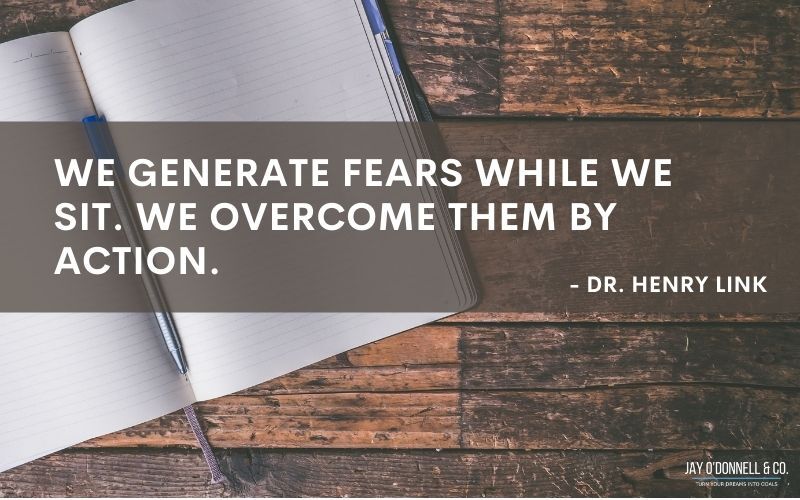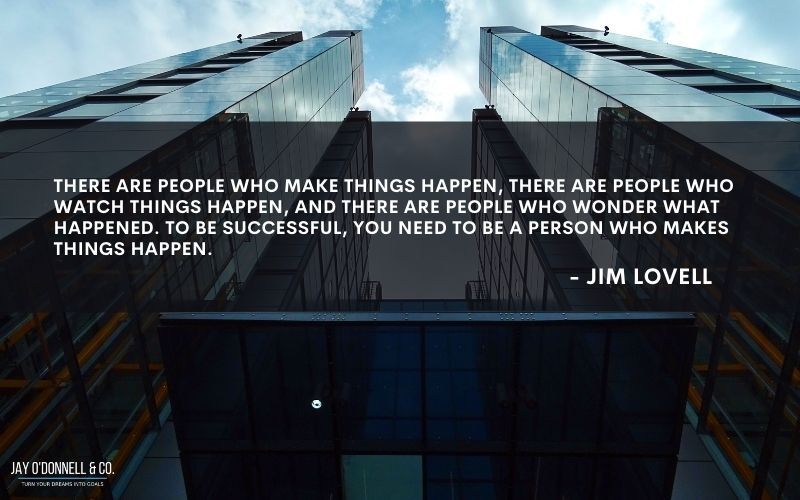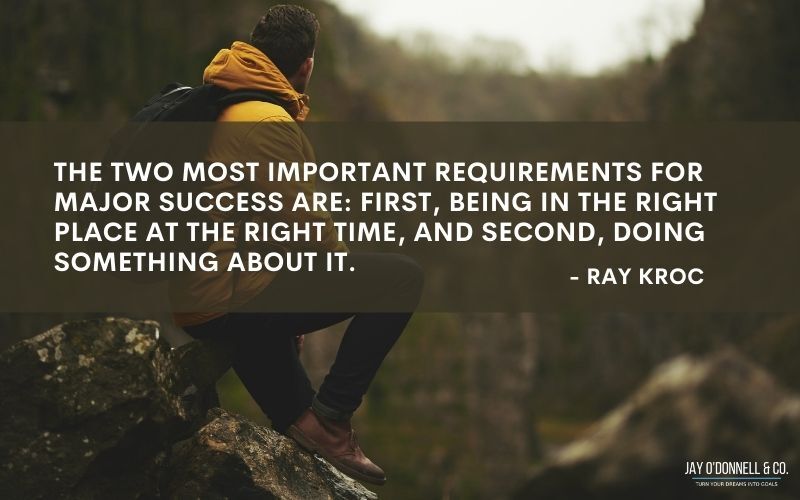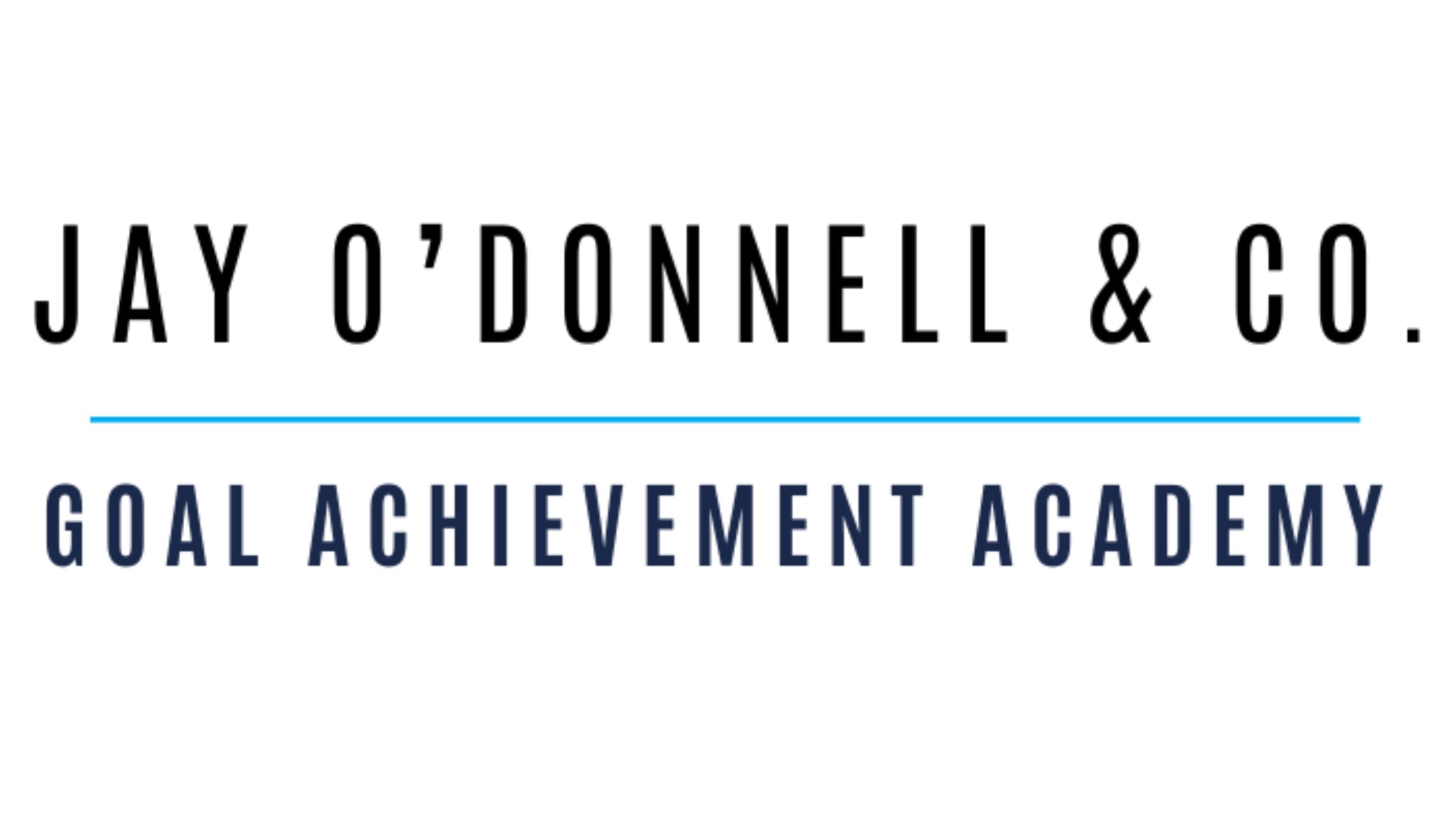A lot of people wonder if writing about your future plans is worth it.
Can’t you just imagine what you want to do, and then do it?
Can’t you just make a plan in your mind, and then pursue that plan in your life?
These are great questions.
However, they speak to a fundamental question that’s vitally important to understand when it comes to goal setting.
The statistics show us that people who write down their goals are statistically more likely to succeed at those goals than people who only make plans in their mind.
There are many reasons for why this is the case.
But I generally like to describe it as follows.
When you write down your goals instead of just keeping them in your head, you’re fulfilling an important part of the process of taking the dreams that are in your imagination and manifesting them in the real world.
And then, when you actually break down those goals and make a cohesive plan of action, what you’re actually doing is creating a roadmap to success that’ll equip you to accomplish whatever you want to achieve in life.
But this leads to another important question.
How do you do it?
How do you set yourself to the task of writing about your future plans?
And perhaps even more importantly, where do you start?
These are actually the most important questions to ask yourself.
And in this post, you’re going to learn a nine-step process for helping you to write down your future plans in a cohesive format.
That will give you a much better chance for success.
Let’s break it down.
How Do You Write A Future Plan?
Writing a future plan basically consists of making a plan for your future, and then writing that plan out as a set of goals.
Of course, this will require you to blend long-term goals with medium and short-term goals.
- Ideally, you would want to set long-term goals to solidify a picture of what you’re ultimately aiming for.
- Then, you’d break those long-term goals down into medium-term goals to figure out what you need to do in the next three to five years.
- And then, you’d break those medium-term goals down into short-term goals—which will tell you what to do on a daily and weekly basis.
But also, before you can even begin this process, you need to answer another important question.
What Are Your Plans For The Future?

It’s helpful to understand what success looks like to you before you begin the process of pursuing success.
Now, this isn’t always an exact science.
Sometimes, it’s difficult to know exactly where you’d like to end up one day.
Therefore, a bit of flexibility is most definitely called for.
However, it’s also important to be as specific as you can be.
The more specific you are, the more on-target your efforts will tend to be.
Think of it like shooting an arrow.
If you know exactly where the target is, and if you can see the target clearly outlined and marked down-range, then you’ll basically have a much better chance of hitting the target with the arrow.
By contrast, if you have no idea where the target is, and everything is dark, then the best you can do is this—you can really only point in any direction and shoot—trusting fully in luck, and understanding that there’s only a very small chance that you’ll actually hit what you want to hit.
Knowing which direction the target is in, and/or at least knowing the general vicinity of the target in relation to where you are, definitely gives you a better advantage than not knowing where it is at all.
But of course, the more specific you can get—and the more information you can glean about it—the better off you’ll be.
How Can I Write About My Future?
You can only write about your future when you come up with some kind of plan, direction, or vision for how you’d like your future to look.
This is really the first step.
So once you solidify some kind of vision or idea for what you’d like your future to look like, you’ll be ready to start writing about your future plans using the following nine-step guide.
Keep in mind, this process doesn’t have to be perfect.
If you’re struggling to figure out what you want for your future, read this post about how to live your life on purpose.
Now, let’s dive into it and talk about it.
9 Steps – How To Write About Your Future Plans
1. Determine Where You Want To Be In Life

This is a pretty simple and straightforward thought process.
It’s in your best interest to identify the target before releasing the arrow.
This could mean deciding on a particular type of career you’d like to have, or focusing on what you’d like your purpose in life to be.
You should get as specific with this as possible.
If you don’t know the specifics, of course, just figuring out a general direction is a great way to start.
Need some additional guidance with this? Check out this post: 12 Steps To Finding Your Passion And Purpose In Life.
2. Choose A Journal
You’re definitely going to want to use a journal, a goal-setting book, a goal achievement system, or even just a notebook to start writing down your goals.
To help choose the perfect journal for you, check out our resource page. We use that page to keep a list of our favorite journals and goal achievement systems. We also review systems on that page to help you choose the journal that’s best for you.
Once you’ve decided what you’re going to use, you’ll be ready to move on to the next step.
3. Write Down Your Major Life Goals

This is the part where you start with your long-term goals.
- What do you want to achieve in your future?
- What kind of career do you want to have?
- How much money would you like to make?
- What would you like your family life to look like?
- What would you like to accomplish in life?
- What would you like to be known for?
These are all important questions to ask as you dream about the future, turn those dreams into goals, and then write them down.
And make no mistake—writing them down is actually a very crucial part of the process.
If you figure out an answer to one of the above questions (or to a different question that helps you to define what one of your major life goals is), make sure to write it down in your journal.
Always write it down, even if you’re not quite sure you understand it or that it’s even correct.
Remember, this is all a part of the process of getting those dreams out of your head and manifested in the real world.
This is the first step toward turning your goals into reality.
Need some extra help with this step?
You can also sign up for my email list to get my free Goal-Setting Essentials Starter Kit.
4. Back-Engineer Those Goals To Figure Out What You Need To Do To Get There
When you write out a long term goal, it’ll probably seem almost impossible to achieve at first glance.
It’ll probably be very big, and it’ll likely involve many steps.
So the first thing that you’ll need to do is to back engineer that goal and figure out what it’ll take to get from where you are now to the finish line.
This is the process of breaking long-term goals down into medium-term goals.
Need some help with these more intermediate goal-setting skills? Read our quick-start guide to SMART goals.
5. Break Those Goals Down Into Monthy, Weekly, And Daily Milestones

This is where writing down your short-term goals becomes incredibly important.
Once you start to break down those medium-term goals, you’ll realize that there are steps that you’ll need to take every day, every week, and every month to help carry you toward the realization of those goals.
But here’s the thing.
It takes hard work to stick to goals like this. That’s why it’s so important to make this part of the process a habit!
Download my weekly goal-setting sheet, print out a few, and give it a try.
You can also read our quick-start guide on how to make goal-setting a habit in your life.
6. Write Down Your Goals On A Consistent Basis
At this point, I might start to sound like a broken record.
But I can’t stress this enough.
Every single day, when you wake up in the morning, spend some time writing down your daily goals to figure out what you have to do today to help carry you toward your medium and long-term goals in the future.
Ideally, we want to make sure that hardly a day goes by where we don’t make progress on our long-term goals in some form or fashion.
See, this is why writing down your goals is so important.
It helps you to stay intentional—and to use your time, energy, effort, and resources to help you achieve what you really want in life.
All too often, people waste their valuable resources reacting to life and chasing things that aren’t going to carry them toward the future they really want for themselves.
Maintaining the discipline to write down your daily goals helps you to avoid this trap and instead helps you to focus on the things that really matter.
7. Stick To Your Plan And Start Working Toward Your Dreams

The first day or two of goal setting may seem new and exciting.
But if you’re like most people, it’ll very quickly become not only ‘normal,’ but even perhaps a little bit dull and boring.
Eventually, it’ll start to feel like a grind.
You’ll start to feel like every day kind of blends into the next day, in the sense that while you’ll be knocking out short term daily goals, you may start to feel like your medium and long term goals are a long way off.
And this is where a lot of people stop writing down their goals and just give up on the process.
But here’s the thing:
It’s so important to stick to your plan and to keep working toward your dreams.
Writing about your future plans is only part of the equation.
It’s also vitally important that you adopt a diligent work ethic and make sure to stay consistent with the plan as you move forward.
8. Review, Revise, And Adapt As Needed
Sometimes, once you get started pursuing a goal, you’ll realize that you might want to review, revise, and adapt that goal.
Sometimes, you may discover new information that leads you in a different direction.
Or sometimes, you might get started on a goal and realize that it’s not what you really want.
In such cases, you may be tempted to slightly revise your goals, adapt your methods, or even pivot to something completely new.
It’s really important to understand that this is a fundamental and natural part of the process.
As we continue on our journey, we’re all going to change.
We’re all going to learn new things and evolve along the way.
Don’t fight this. Make sure that you understand the difference between giving up and pivoting.
Giving up means to cease all effort and to retreat back to the state of your previous comfort zone, effectively deciding that you’re going to stop trying to make any progress whatsoever.
Pivoting means deciding to invest that effort in a new or revised direction because you’ve determined that this new updated direction is actually a better use of your time and fits in better with your passion and your purpose.
So don’t be afraid to review, revise and adapt.
9. Never Give Up
And finally, we reach what is perhaps the most difficult part of the process:
Never giving up!
Babe Ruth may have said it best.
“You just can’t beat the person who never gives up.”
However, there are many quotes by many successful people that demonstrate an understanding of the fact that if you wish to succeed in life, giving up must never be an option.
For example, Winston Churchill said:
“Never give up on something that you can’t go a day without thinking about.”
And Dale Carnegie once said:
“Most of the important things in the world have been accomplished by people who have kept on trying when there seemed to be no hope at all.”
See, even uttering the phrase “never give up” might sound cliche.
But it’s a simple truth.
And it can’t be overstated.
The road to success isn’t always easy.
There are going to be challenges, pitfalls, trials, and difficult times.
And there’s a 100% guarantee that you’re going to feel like giving up at least a few times along the way.
However, it’s also vitally important to understand that the only true way to fail is to give up.
If you care about something, are willing to adapt, and you keep learning and keep striving forward to achieve it, you’re bound to make progress.
And as long as you continue to make progress, you’ll continue to increase the odds that you’re going to succeed at it.
At that point, it’s really just a simple math problem.
It might take a while, but that’s okay. It’s never too late to succeed.
Conclusion – What Is Your Plan For Life?
Hopefully, this post has inspired you to consider writing about your future plans and creating goals for yourself.
Turning your dreams into goals, and then turning those goals into reality, is a process that many people think about—but very few end up following through on.
And the reason for that, honestly, is because it’s not always easy.
But here’s the thing.
If you follow these nine steps, you’re bound to start making progress.
And at the end of the day, you might actually be really surprised by how much progress you’re capable of making if you do your best and don’t give up.
In conclusion, I’ll leave you with a quote I recently heard by Jordan B. Peterson that I think fits perfectly with this conversation.
It was recently shared on his Facebook Page.
“Then, when you wake up in the middle of the night and the doubts crowd in, you have some defense: “For all my flaws, which are manifold, at least I am doing this. At least I am taking care of myself. At least I am of use to my family, and to the other people around me. At least I am moving, stumbling upward, under the load I have determined to carry.””
This is such a profound quote!
I hope you’ll take it to heart and understand that it actually matters.
You can do it.
I believe in you.
Now, it’s time to start writing about your future plans and turning those dreams into goals.
You’ve got this.
Best wishes…
Jay O’Donnell

